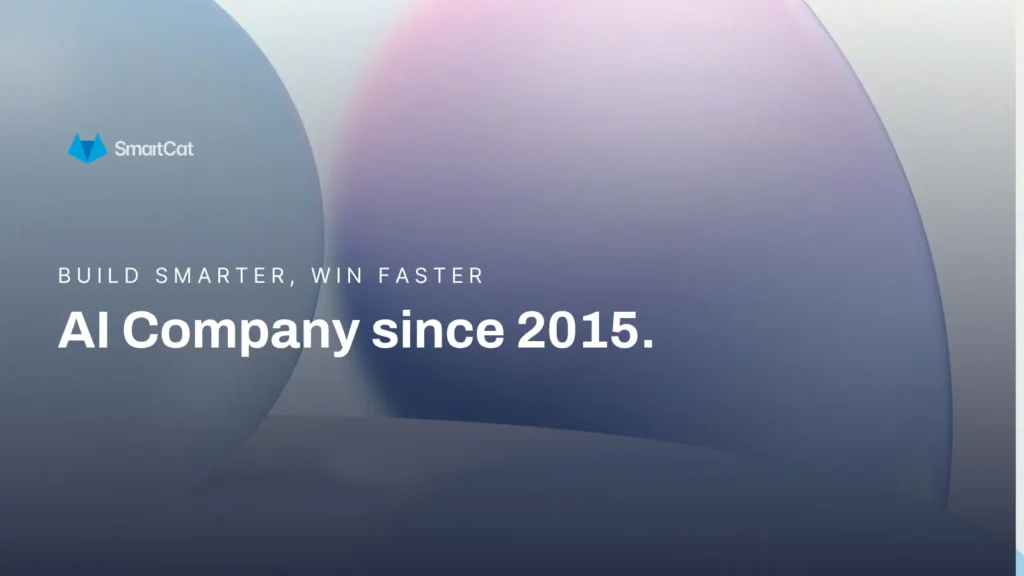
Can you guess the most valuable asset for any organization? It’s data. This makes data analytics crucial, because it enables you to understand customer behavior, optimize operations, and forecast future trends. In short, it helps businesses remain agile and competitive.
However, very few companies are truly ready to effectively leverage data analytics. This goes beyond mere data access: it requires a closer examination of the systems, culture, and capabilities that govern data management and utilization.
Being “data analytics ready” means more than just implementing dashboards or investing in a popular platform. It demands careful preparation, clear alignment with business objectives, and a dedication to building a data-driven organization from the ground up.
This article will explore what it truly takes to become data analytics ready, emphasizing the strategic, technical, and cultural foundations needed to unlock real value from your data.
Whether you are at the start of your analytics journey or re-evaluating your current capabilities, this guide will help you assess your organization’s standing and confidently plan your next steps.
What Is Data Analytics?
At its core, data analytics is the practice of examining data sets to extract meaningful insights that drive smarter, more informed decisions. It’s about turning raw numbers into narratives – uncovering trends, identifying patterns, and revealing opportunities that might otherwise remain hidden.
This process can involve a range of techniques, depending on the complexity and goals of the analysis:
- Descriptive analytics: Summarizes what has happened using historical data.
- Diagnostic analytics: Helps explain why something happened.
- Predictive analytics: Uses statistical models and machine learning to forecast future outcomes.
- Prescriptive analytics: Goes a step further to suggest actions based on predicted scenarios.
Why Data Analytics Matters
To truly harness the power of data analytics, a strong foundation is essential. Without a clear data strategy, reliable data sources, and organizational support, efforts in analytics may lead to disappointing outcomes and costly errors.
The true value of data lies not just in the analysis itself, but in the preparedness to act upon the insights it provides.
Technologies like statistical modeling, data visualization tools, and machine learning algorithms are crucial for automating and improving analytical processes.
When used effectively, these tools can help businesses enhance operational efficiency, deliver personalized customer experiences, and gain a competitive advantage.
4 Essential Elements To Make Your Organization Data Analytics Ready
Achieving true data analytics readiness begins with strengthening its foundations across your organization. These are the four pillars you need to focus on:
Data Quality
The first and arguably most critical step in becoming data analytics ready is assessing the quality of your data. Think of data as the fuel that powers every analytics engine. If that fuel is contaminated or incomplete, even the most advanced tools and models will produce unreliable or misleading results.
Data quality refers to several key attributes:
- Accuracy: Is the data correct and free from errors?
- Completeness: Are there missing values or gaps?
- Consistency: Is the data uniform across systems and departments?
- Timeliness: Is the data up-to-date and refreshed regularly?
- Relevance: Does the data align with your business goals and use cases?
Data Accessibility
This is just as crucial. Simply possessing quality data isn’t enough if it’s trapped in isolated systems or spreadsheets. Your teams require seamless access, sharing, and collaboration with data.
This typically requires the integration of disparate systems and the creation of centralized data repositories, such as data lakes or cloud-based warehouses, to establish a unified source of truth.
Let’s take the example of a retail company preparing for a new data initiative. Before diving into analytics, they might perform a thorough audit of the following key data sources:
- Transaction logs to analyze sales trends
- Customer feedback to understand satisfaction
- Identify product issues or inventory data to assess stock levels and supply chain efficiency
In doing so, they may uncover issues like duplicate records, incomplete fields, or outdated formats that require cleansing or transformation. Addressing these issues upfront ensures that downstream analytics efforts are grounded in reliable, actionable data.
Ultimately, unreliable or inaccessible data will lead to unreliable insights. Therefore, establishing data quality and accessibility as key priorities is essential for developing an analytics-ready organization.
Technology Infrastructure To Support Data Analytics
For data to benefit your business, it’s not enough for it to be clean and well-organized: you also need the right technology infrastructure.
Your data analytics capabilities are directly tied to the strength of your underlying systems, which support the collection, storage, processing, and analysis of data.
A robust data infrastructure typically comprises several core components:
| Core Component | Details |
| Data Storage | Cloud data lakes, data warehouses, and distributed file systems for large-scale data retention and accessibility. |
| Processing Power | Apache Spark and BigQuery for fast querying, transformation, and computation of data |
| Integration Tools | Platforms that include ETL (Extract, Transform, Load) pipelines and APIs for connecting diverse data sources. |
| Analytics and BI Tools | Power BI, Tableau, or Looker to visualize and interpret data to facilitate informed decision-making. |
The choice of infrastructure – on-premises, cloud, or hybrid – depends on various factors, including your business model, compliance requirements, scalability needs, and existing technology environment:
- Cloud-based platforms (e.g., AWS, Azure, Google Cloud) offer flexibility, scalability, and access to advanced AI/ML capabilities, often with lower upfront costs. They are ideal for growing companies or those looking to modernize their systems.
- On-premises solutions provide complete control and may be necessary for regulated industries (finance or defense). However, they can be more costly and less agile.
- Hybrid models offer a balanced approach, combining the advantages of both by offloading some functions to the cloud while maintaining local control over sensitive data.
Skills and Expertise
Even with meticulously cleaned and prepared data, and the most cutting-edge analytics tools readily available, your organization’s journey toward leveraging data will inevitably falter without one absolutely essential ingredient: skilled people who possess the unique ability to transform raw data into actionable insights.
Talent is, unequivocally, the true engine of data analytics.
The capacity to not only interpret complex datasets but also to construct robust analytical models, communicate the resulting insights in a compelling and actionable manner that genuinely drives organizational decision-making and strategic initiatives, is a highly specialized and multifaceted skill set.
Unfortunately, this is precisely the kind of expertise that many, if not most, organizations frequently find themselves sorely lacking.
The gap between available data and the ability to extract value from it is often a human one. It’s not enough to simply collect vast quantities of information.
Without people who understand the nuances of statistical analysis, data visualization, predictive modeling, and, critically, how to translate technical findings into business language, the potential of data remains untapped.
These talented individuals are the bridge between raw numbers and strategic advantage, enabling companies to move beyond simply observing past performance to proactively shaping future outcomes.
Clear Objectives

Before immersing ourselves in the complexities of dashboards, algorithms, or machine learning models, we need to answer a fundamental question: Why are we doing this in the first place?
Without clearly defined objectives, data analytics initiatives risk becoming unfocused. Teams might invest considerable time in producing impressive reports or models that ultimately fail to yield tangible business outcomes.
A clear sense of purpose ensures that all analytics efforts align with the organization’s overarching strategy and deliver measurable value.
So then, what constitutes a “clear” objective?
Effective analytics objectives adhere to the SMART framework:
- Specific: They concentrate on a precise business question or challenge.
- Measurable: They are linked to key performance indicators (KPIs) or metrics that can be tracked over time.
- Achievable: They are realistic, considering your current data maturity and available resources.
- Relevant: They directly contribute to broader business goals.
- Time-bound: They are set within a defined timeframe for evaluation.
Real-Life Applications of Data Analytics
The value of data analytics isn’t just theoretical. Organizations across sectors are already achieving measurable success by embedding analytics into their operations, products, and decision-making processes.
Let’s explore a real-world example that illustrates how analytics translates into growth, efficiency, and innovation.
How Levi’s Used Data Analytics to Its Advantage
Levi Strauss & Co, the iconic denim brand, has embraced data analytics to stay relevant in the retail industry.
The company partnered with Google Cloud to develop a predictive analytics model that analyzed millions of data points – from global purchase behaviors and loyalty programs to retail partner sales across 110 countries.
Through these insights, Levi’s spotted an emerging trend: a renewed interest in baggy jeans. But unlike what many assumed, this trend wasn’t limited to Gen Z audiences on TikTok: it spanned a much broader demographic.
Armed with these data-driven insights, Levi’s accelerated production, launched targeted campaigns, and timed product releases more precisely.
The result: A 15% increase in sales of loose-fit jeans, driven by analytics-informed decisions, not guesswork. Like Moneyball, but instead of baseball, we have jeans.
Conclusion – Making Your Company Data Analytics Ready Is Non-Negotiable
Mastering data analytics in 2025 is no longer a nice-to-have, but a necessity for businesses looking to remain competitive, innovate, and make informed decisions.
Data analytics provides a clear path to success, but its adoption goes beyond merely implementing new tools. It requires a strategic approach to ensure your organization is truly prepared to leverage these technologies effectively.
A systematic approach to data readiness involves:
- Data Quality and Accessibility: Building a foundation of reliable, accurate, and easily accessible data is paramount.
- Robust Technology Infrastructure: A scalable and secure technological ecosystem is essential for supporting analytics and generating insights efficiently.
- Talent Investment: Acquiring or developing the right skills and expertise within your team ensures that data is actively used to drive decisions and create value.
- Clear Objectives: Well-defined business goals are crucial for focusing analytics efforts and accurately measuring their impact.
Ultimately, becoming data analytics ready transcends tools and talent. It’s about cultivating a data-driven culture throughout your organization, where data insights are used not just for optimizing current operations, but also for innovation, predicting trends, and formulating strategic plans.
By taking these steps, your organization will be well-equipped to thrive in the data-centric landscape of tomorrow.
Are you ready to unlock the full potential of data analytics? If you are, schedule a call with your experts, and finally have your data work for you!






